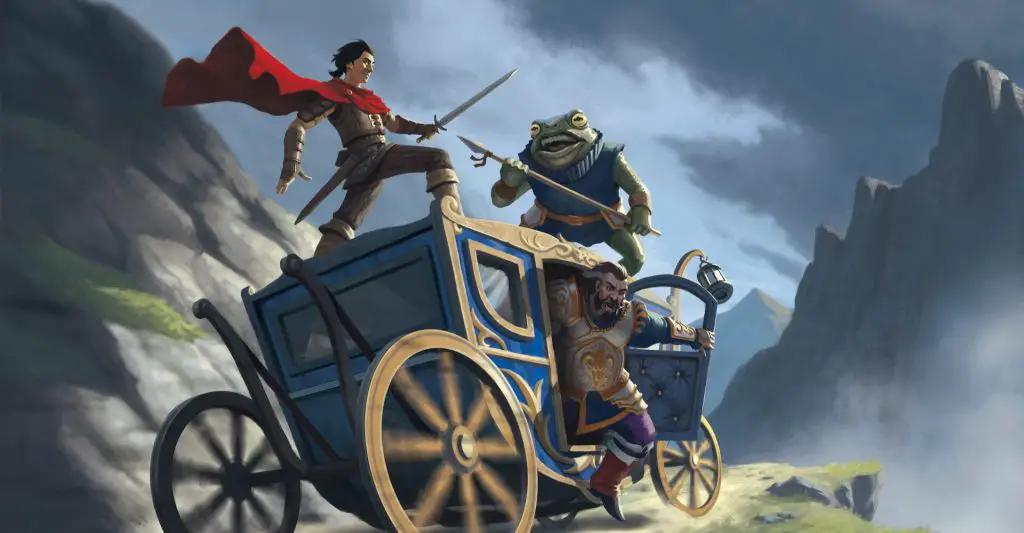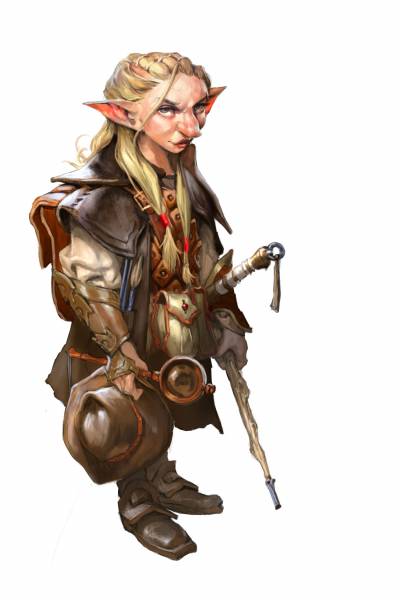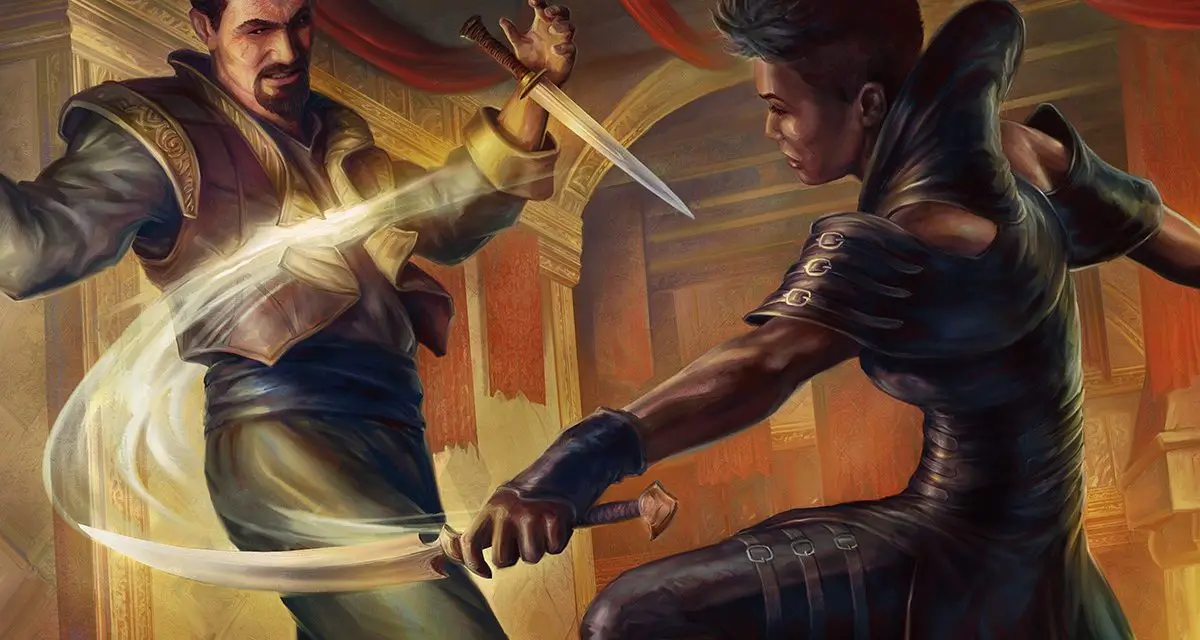One of the Rogue’s most iconic features in D&D 5e is Uncanny Dodge, a feature that epitomizes their knack for avoiding danger with almost supernatural ease.
Imagine you’re deep in the heart of a dragon’s lair, the beast’s fiery breath scorching the air around you. Just as its massive claw comes crashing down, you deftly sidestep, reducing what could have been a grievous wound to just a scratch. That’s the power of Uncanny Dodge.
In this article, we’ll explore what Uncanny Dodge is, how to use it effectively in your adventures, and weigh its pros and cons.
Whether you’re a seasoned rogue looking to refine your skills or a new player curious about what makes this class so special, read on to uncover the secrets of this life-saving ability.
So, grab your daggers, don your cloak, and let’s delve into the art of the dodge!
What is Uncanny Dodge 5e?
Uncanny Dodge is the Rogue’s trusty trick up their sleeve.
Available at 5th level. It allows you to use your reaction to halve the damage from an attack you can see coming. Whether it’s a sword swing, an arrow, or a spell attack, if you can see it, you can dodge it!
This feature is all about turning potentially devastating blows into minor inconveniences, keeping you in the fight longer and showcasing your Rogue’s unparalleled reflexes and survival instincts.
Example 1: The Nimble Duelist
In the midst of a heated duel, your rogue faces off against a heavily armored knight.
The knight swings his massive greatsword in a wide arc, aiming to cleave you in two.
Just as the blade is about to connect, you instinctively pivot on your heel, twisting your body to the side. The sword grazes past you, leaving only a shallow cut instead of a grievous wound.
With a sly grin, you prepare for your counterattack, unhindered by what could have been a devastating blow.
Example 2: The Quick-thinking Archer
During a tense standoff in a dense forest, an enemy archer takes aim from the treetops.
You catch a glint of light reflecting off the arrowhead just in time. As the arrow speeds towards you, you drop into a roll, feeling the arrow’s fletching brush past your shoulder.
You pop back up on your feet, only scratched and ready to press the attack, all thanks to your uncanny reflexes.

How to Use Uncanny Dodge 5e Effectively
Mastering Uncanny Dodge is all about timing, awareness, and smart decision-making.
Now that we’ve covered what this feature is, let’s go over some tips to help you make the most of this life-saving ability!
Situational Awareness
As a Rogue, your eyes should always be scanning the battlefield.
Keep track of enemy movements and anticipate incoming attacks. Remember: Uncanny Dodge only works if you can see the attacker, so maintaining a clear line of sight is crucial.
Whether you’re ducking behind cover or positioning yourself strategically, staying aware of your surroundings will ensure you can react in time.
Managing Reactions
It’s important to also understand how Uncanny Dodge works for your character’s overall action economy.
Keep in mind that Uncanny Dodge uses your reaction, which is a precious resource you only get once per round. Balancing its use with other potential reactions, like making an opportunity attack or using a spell if you have multiclassed, is key.
Prioritize using Uncanny Dodge against the most damaging attacks to get the most out of it. For instance, if you’re facing multiple foes, it might be better to save your reaction for that heavy-hitting boss rather than a minor minion.
Synergies with Other Abilities
Uncanny Dodge works wonders in combination with other Rogue features.
Pair it with Evasion, which you get at 7th level, to become a true master of avoiding damage. Evasion lets you take no damage on successful Dexterity saving throws against effects like fireballs, and only half damage on a failure.
Together, these abilities make you incredibly resilient.
Additionally, use Cunning Action to stay mobile and out of direct lines of attack, ensuring you always have the best position to see and dodge incoming threats.
Used cleverly, you’ll have no problem moving in to catch a distracted foe with a Sneak Attack while also reducing any incoming damage from enemies!
Anticipating Enemy Tactics
Pay attention to your enemies’ behavior and attack patterns.
If you notice a spellcaster preparing a powerful spell or a warrior winding up for a heavy strike, be ready to use Uncanny Dodge. Predicting when you’ll need to halve damage can often mean the difference between staying in the fight and being knocked out cold.
By mastering these strategies, you can turn Uncanny Dodge into a truly pivotal part of your Rogue’s toolkit, allowing you to dance through danger and emerge victorious from even the most perilous encounters.

Pros and Cons of Uncanny Dodge 5e
Like any good trick, Uncanny Dodge has its strengths and limitations. Understanding both the pros and the cons is important when it comes to using this feature well!
Here’s a breakdown to help you understand when it shines and where it might leave you wanting more.
Pros
- Significant Damage Reduction: Uncanny Dodge can halve the damage from a single attack, which can be an absolute lifesaver when facing powerful foes. This feature can turn what would be a devastating hit into a manageable one, keeping you in the fight longer.
- No Saving Throw Required: Unlike many other defensive abilities, Uncanny Dodge doesn’t require a saving throw. As long as you can see the attack coming and have your reaction available, you can reduce the damage automatically.
- Usable Every Round: Since it uses your reaction, you can theoretically use Uncanny Dodge every round of combat, making it a reliable and consistent form of damage mitigation.
Cons
- Consumes Your Reaction: Uncanny Dodge uses your reaction, which means you can’t use it for other actions like opportunity attacks or certain spells if you’ve multiclassed. This requires careful decision-making about when to use it.
- Requires Line of Sight: You can only use Uncanny Dodge if you can see the attacker. This means it’s ineffective against invisible foes or attacks from hidden enemies.
- Limited to One Attack: Uncanny Dodge only reduces the damage of a single attack per round. If you’re facing multiple attackers or an enemy with a multi-attack, you’ll still take full damage from other hits.
- Doesn’t Protect Against Area Effects: Uncanny Dodge only works against attacks that involve an attack roll. It won’t help against area effects like fireballs or traps that require saving throws. For those, you’ll need to rely on other abilities like Evasion.
Understanding these pros and cons will help you use Uncanny Dodge to its fullest potential, ensuring you’re always ready to dodge the deadliest blows and stay one step ahead of danger.
FAQs – Uncanny Dodge 5e
Uncanny Dodge can be used on any attack that involves an attack roll, whether it’s a melee attack, ranged attack, or spell attack. As long as you can see the attacker and the attack roll hits you, you can use Uncanny Dodge to halve the damage.
Yes, Uncanny Dodge works against critical hits. It halves the total damage of the attack, including the extra damage from the critical hit. This can significantly reduce the impact of what would otherwise be a devastating blow.
No, Uncanny Dodge does not require a saving throw. It’s a straightforward use of your reaction to halve the damage from an attack you can see. This makes it a reliable and consistent defensive option.
No, Uncanny Dodge cannot be used if you are surprised. When you are surprised, you cannot take reactions until your first turn in the combat, which means you won’t be able to use Uncanny Dodge during that initial surprise round.
No, Uncanny Dodge can only be used once per round because it uses your reaction. You only get one reaction per round, so you’ll need to choose the most opportune moment to use it.
No, Uncanny Dodge does not work against area-of-effect spells or any effect that doesn’t involve an attack roll. For those types of damage, you’ll need to rely on other abilities, such as Evasion, which helps you avoid or reduce damage from area effects that require a Dexterity saving throw.
The damage rounds down. For example, a hit dealing 13 damage to a Rogue who then uses Uncanny Dodge would now deal 6 damage.
Conclusion – Uncanny Dodge 5e
And there you have it, adventurers! Uncanny Dodge is more than just a nifty trick—it’s a vital feature that can mean the difference between life and death for your Rogue.
Hopefully, you’ve found this guide helpful. By mastering this feature, you’ll be able to outmaneuver your enemies, mitigate devastating blows, and keep your character in peak condition for the challenges ahead.
Whether you’re dodging the deadly strikes of a dragon or slipping past the arrows of a hidden archer, Uncanny Dodge showcases the essence of what it means to be a Rogue: quick, cunning, and always one step ahead.
So, next time you’re in the thick of battle, remember these tips and let your reflexes do the talking!
Now, I’d love to hear your thoughts and experiences with Uncanny Dodge! Have you had any memorable moments where this ability saved your Rogue’s hide? Share your stories in the comments below and join the conversation with fellow D&D enthusiasts.
Don’t forget to sign up for the Tabletop Joab newsletter for more tips, tricks, and tales from the world of Dungeons & Dragons. Stay informed, stay inspired, and keep your dice rolling true. Until next time, may your adventures be thrilling and your dodges be uncanny!









